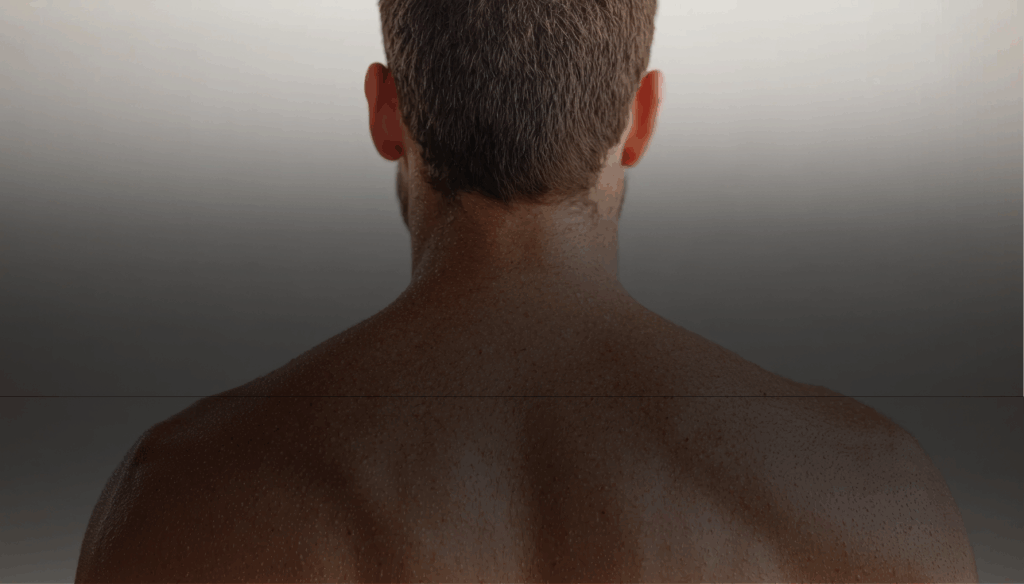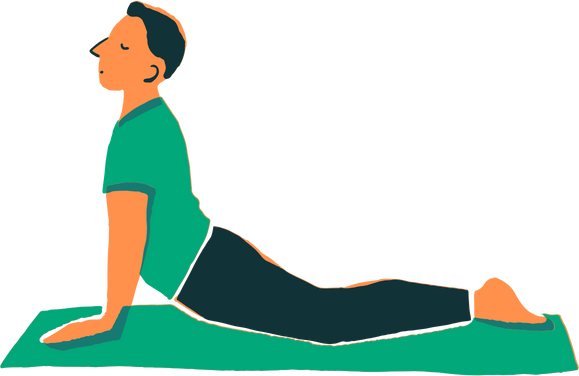
Paresthetic notalgia is an often overlooked disorder that causes persistent itching in the upper back.
It is linked to nerve irritation, and although harmless, it can become very bothersome in everyday life.
Let’s take a closer look at this disorder, which is much more common than you might think!
Reading time: 5 minutes
Paresthetica Notalgia: When the Back Itches Without an Apparent Reason
Paresthetic notalgia is a relatively unknown but common disorder. It manifests as persistent itching, often located between the shoulder blades in the upper back. These sensations may also be accompanied by tingling, mild burning, or a pins-and-needles sensation. The most surprising thing is that there are often no visible signs on the skin.
This discomfort actually comes from a small nerve in the back that is irritated or compressed, often due to posture problems, osteoarthritis, or simply muscle tension. The problem mainly affects women in their fifties, but can affect anyone.
Even though it is not serious, paresthetic notalgia can be very annoying in everyday life. Fortunately, there are solutions to relieve the symptoms: exercises, massages, local treatments, or sometimes medication.

What exactly does it feel like?
Paresthetic notalgia may seem harmless on paper, but those who suffer from it on a daily basis know how disturbing it can be. The most common sensation is a persistent itching in a small area of the upper back, often just below the shoulder blade. But it’s not just a “simple” urge to scratch: some people experience tingling, burning, or electric sensations, as if the skin were “overheating” for no reason. What can be frustrating is that there is often nothing visible on the skin—no redness, no pimples, nothing to explain what you’re feeling. Many people end up scratching constantly, sometimes to the point of irritating the skin or creating a more pigmented area. And since flare-ups can occur regularly, it becomes a real nuisance in everyday life, especially at night or during periods of stress or fatigue.
How can paresthetic notalgia be relieved?
Although it is often persistent, paresthetic notalgia can be relieved through several approaches. As it is linked to nerve irritation, treatment mainly aims to relax the affected area and reduce inflammation. Physical therapy, osteopathy, or massage sessions can help relax the back muscles and improve posture. Some people also find relief through acupuncture or regular stretching exercises.
Medically speaking, creams containing capsaicin (chili pepper extract) or specific patches can relieve itching. In some cases, medications such as anti-inflammatories or nerve-acting treatments (such as gabapentin) may be prescribed. The most important thing is to find what works for each individual, as there is still no single, universal treatment.
Capsaicin, a targeted and appropriate solution
For people suffering from paresthetic notalgia, Capsaïne offers a simple and effective solution to relieve itching, burning, or tingling sensations in the upper back.
Formulated with capsaicin (learn more about its history here), a natural active ingredient extracted from chili peppers, this cream acts locally to desensitize the nerve endings responsible for discomfort.
When applied regularly to the affected area, Capsaicin gradually reduces the intensity of symptoms while improving skin comfort. Thanks to its pleasant texture and targeted action, it can easily be incorporated into a daily skincare routine. It is an ideal option for those seeking non-medicinal relief inspired by nature and backed by medical expertise.
The right actions to relieve pain
Some simple actions can really help relieve symptoms and prevent attacks. It all starts with better posture: avoid staying bent over for long periods of time, remember to straighten your back, and set up an ergonomic workspace if you spend hours in front of a screen. Gentle stretching of the upper back and shoulders, done every day, can relax the muscles surrounding irritated nerves. Gentle exercise, such as swimming or yoga, can also be beneficial. And as soon as you start to feel discomfort, applying a suitable cream can limit the intensity of the episode. Finally, don’t hesitate to consult a physical therapist or osteopath to correct chronic tension and promote better back mobility.

Sources
Orphanet – Rare Disease Database (paresthetic notalgia is sometimes referred to as peripheral neurological disorder).
PubMed – Studies on the treatment of paresthetic notalgia, particularly those mentioning the use of topical capsaicin.
DermNet NZ – A recognized dermatology platform that provides clear explanations of neurocutaneous disorders such as paresthetic notalgia.
Revue du Rhumatisme – Articles in French concerning neuropathic pain in the spine.
Medscape & MSD Manuals – General medical references for healthcare professionals, with detailed fact sheets on neurodermatological disorders.
Rendez-vous personnalisé gratuit
Des conseils concernant votre situation ?
Des questions sur nos produits ?
Nos rendez-vous personnalisés sont proposés du lundi au vendredi, entre 9h00 et 17h00.
Choisissez le créneau qui vous convient le mieux, et échangez en toute tranquillité avec l’une de nos conseillères.





